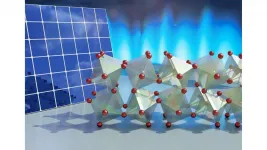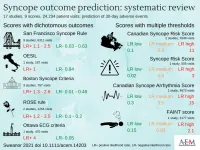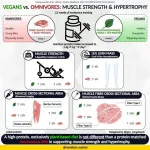Perovskites, a class of materials with a unique crystal structure, could overtake current technology for solar energy harvesting. They are cheaper than materials used in current solar cells, and they have demonstrated remarkable photovoltaic properties -- behavior that allows them to very efficiently convert sunlight into electricity.
Revealing the nature of perovskites at the atomic scale is critical to understanding their promising capabilities. This insight can help inform models to determine the optimal makeup of perovskite materials for solar cells, which can be used to power vehicles, electronic devices and even home heating and other appliances.
"Perovskites do well at preventing recombination. We want to know what mechanism causes this and if we can exploit it to create better solar cells." -- Argonne scientist Ray Osborn
Scientists at the U.S. Department of Energy's (DOE) Argonne National Laboratory participated in a collaboration led by Duke University, along with DOE's Oak Ridge National Laboratory and other collaborators, to study the inner workings of a perovskite material using the world-class X-ray scattering capabilities at Argonne and neutron scattering capabilities at Oak Ridge. The scattering capabilities enabled the scientists to observe the material's behavior at the atomic scale, and the study revealed that liquid-like motion in perovskites may explain how they efficiently produce electric currents.
"There is a lot of excitement surrounding these materials, but we don't fully understand why they are such good photovoltaics," said Duke University's Olivier Delaire, lead scientist on the study.
When light hits a photovoltaic material, it excites electrons, prompting them to pop out of their atoms and travel through the material, conducting electricity. A common problem is that the excited electrons can recombine with the atoms instead of traveling through the material, which can significantly decrease the electricity produced relative to the amount of sunlight hitting the material.
"Perovskites do well at preventing recombination," said Argonne's Ray Osborn. "We want to know what mechanism causes this and if we can learn from this to create better solar cells."
The team studied one of the simplest perovskites -- a compound of cesium, lead and bromine (CsPbBr3) -- to figure out what is going on at the atomic scale.
Using X-ray scattering capabilities at Argonne's Magnetic Materials group's beamline (6-ID-D) at the lab's Advanced Photon Source, a DOE Office of Science User Facility, the team captured the average positions of the atoms in a perovskite crystal at different temperatures. They found that each lead atom and its surrounding cage of bromine atoms form rigid units that behave like molecules. These units oscillate -- or jiggle back and forth -- in a liquid-like manner.
"The molecules in this material rotate about the other molecules like they're hinged together, and around the hinges, the molecules act kind of floppy," said Delaire.
One theory to explain how perovskites resist recombination is that these distortions in the lattice, or crystal structure, follow the free electrons as they traverse the material. The electrons might deform the lattice, causing the liquid-like disturbances, which then prevent them from falling back into their host atoms. This theory, which is bolstered by the new experimental results, can provide new insights into how to design optimal perovskite materials for solar cells.
The data also indicates that molecules in the material oscillate within two-dimensional planes, with no motion across planes -- similar to a carnival ride that only swings left to right, but never front to back. The two-dimensional nature of the crystal distortions could be one more puzzle piece to explain how the perovskite can prevent electron recombination, contributing to the efficiency of the material.
According to Osborn, the two-dimensional patterns in the X-ray scattering data had never been seen. "Based on these unexpected measurements, we wanted to dig even deeper by not only looking at average atomic positions, but how the atoms move around in real time," he said.
To investigate the motion of the atoms directly, the team used neutron scattering capabilities at the Spallation Neutron Source, a DOE Office of Science user facility at Oak Ridge National Laboratory. Researchers at Argonne's Materials Science division and Northwestern University grew the large, centimeter-scale crystals required for the neutron measurements.
The neutron scattering confirmed the unforeseen pattern seen in the X-ray scattering experiment, but showed, in addition, that it takes almost no energy for the molecules to oscillate in two dimensions. This helps to explain why the excited electrons can deform the lattice so easily.
"This work is a beautiful example of the complementarity of neutrons and X-rays in revealing both the structure and dynamics of complex materials," said Osborn, who was involved in both sets of measurements.
The study represents a step towards taking full advantage of the largely untapped renewable energy from the sun, which could have significant impact on both the environment and economy.
INFORMATION:
A paper on the study, "Two-dimensional overdamped fluctuations of the soft perovskite lattice in CsPbBr3," was published in Nature Materials on March 15, 2021. Computational studies in support of the experiment were performed at the National Energy Research Scientific Computing Center at Berkeley National Laboratory.
The research was funded by DOE's Office of Basic Energy Sciences, Materials Science and Engineering division.
About the Advanced Photon Source
The U. S. Department of Energy Office of Science's Advanced Photon Source (APS) at Argonne National Laboratory is one of the world's most productive X-ray light source facilities. The APS provides high-brightness X-ray beams to a diverse community of researchers in materials science, chemistry, condensed matter physics, the life and environmental sciences, and applied research. These X-rays are ideally suited for explorations of materials and biological structures; elemental distribution; chemical, magnetic, electronic states; and a wide range of technologically important engineering systems from batteries to fuel injector sprays, all of which are the foundations of our nation's economic, technological, and physical well-being. Each year, more than 5,000 researchers use the APS to produce over 2,000 publications detailing impactful discoveries, and solve more vital biological protein structures than users of any other X-ray light source research facility. APS scientists and engineers innovate technology that is at the heart of advancing accelerator and light-source operations. This includes the insertion devices that produce extreme-brightness X-rays prized by researchers, lenses that focus the X-rays down to a few nanometers, instrumentation that maximizes the way the X-rays interact with samples being studied, and software that gathers and manages the massive quantity of data resulting from discovery research at the APS.
This research used resources of the Advanced Photon Source, a U.S. DOE Office of Science User Facility operated for the DOE Office of Science by Argonne National Laboratory under Contract No. DE-AC02-06CH11357.
Argonne National Laboratory seeks solutions to pressing national problems in science and technology. The nation's first national laboratory, Argonne conducts leading-edge basic and applied scientific research in virtually every scientific discipline. Argonne researchers work closely with researchers from hundreds of companies, universities, and federal, state and municipal agencies to help them solve their specific problems, advance America's scientific leadership and prepare the nation for a better future. With employees from more than 60 nations, Argonne is managed by UChicago Argonne, LLC for the U.S. Department of Energy's Office of Science.
The U.S. Department of Energy's Office of Science is the single largest supporter of basic research in the physical sciences in the United States and is working to address some of the most pressing challenges of our time. For more information, visit https://energy.gov/science.




